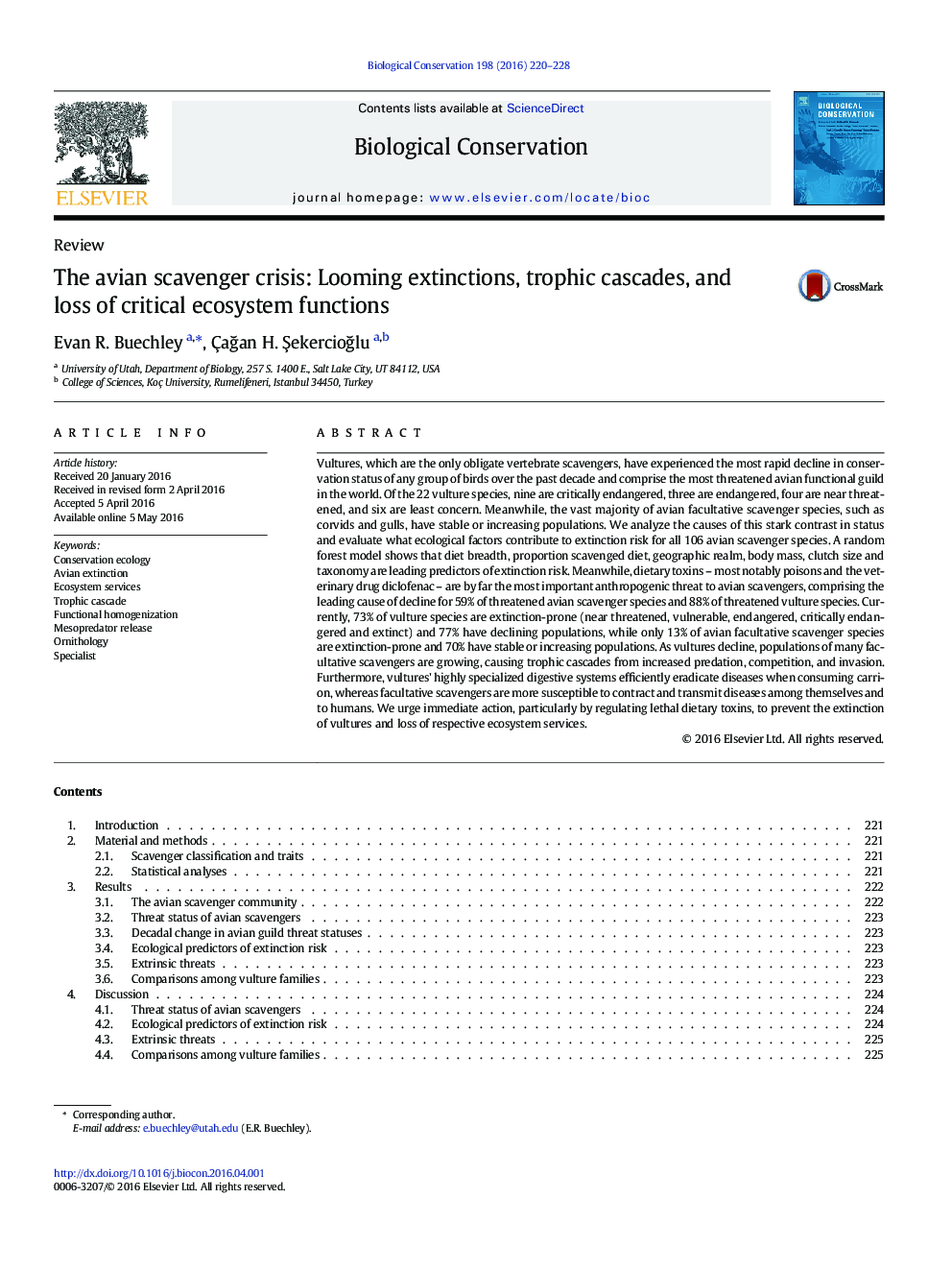| کد مقاله | کد نشریه | سال انتشار | مقاله انگلیسی | نسخه تمام متن |
|---|---|---|---|---|
| 4385010 | 1617903 | 2016 | 9 صفحه PDF | دانلود رایگان |
• Vultures are the most threatened group of birds, collapsing toward extinction.
• 70% of avian facultative scavengers have stable or increasing populations.
• Diet specialization and taxonomy are leading extinction risk predictors.
• Dietary toxins are main threat for 59% of all avian scavengers, 88% of vultures.
• Vulture declines expected to cause trophic cascades and disease outbreaks.
Vultures, which are the only obligate vertebrate scavengers, have experienced the most rapid decline in conservation status of any group of birds over the past decade and comprise the most threatened avian functional guild in the world. Of the 22 vulture species, nine are critically endangered, three are endangered, four are near threatened, and six are least concern. Meanwhile, the vast majority of avian facultative scavenger species, such as corvids and gulls, have stable or increasing populations. We analyze the causes of this stark contrast in status and evaluate what ecological factors contribute to extinction risk for all 106 avian scavenger species. A random forest model shows that diet breadth, proportion scavenged diet, geographic realm, body mass, clutch size and taxonomy are leading predictors of extinction risk. Meanwhile, dietary toxins – most notably poisons and the veterinary drug diclofenac – are by far the most important anthropogenic threat to avian scavengers, comprising the leading cause of decline for 59% of threatened avian scavenger species and 88% of threatened vulture species. Currently, 73% of vulture species are extinction-prone (near threatened, vulnerable, endangered, critically endangered and extinct) and 77% have declining populations, while only 13% of avian facultative scavenger species are extinction-prone and 70% have stable or increasing populations. As vultures decline, populations of many facultative scavengers are growing, causing trophic cascades from increased predation, competition, and invasion. Furthermore, vultures' highly specialized digestive systems efficiently eradicate diseases when consuming carrion, whereas facultative scavengers are more susceptible to contract and transmit diseases among themselves and to humans. We urge immediate action, particularly by regulating lethal dietary toxins, to prevent the extinction of vultures and loss of respective ecosystem services.
Journal: Biological Conservation - Volume 198, June 2016, Pages 220–228
